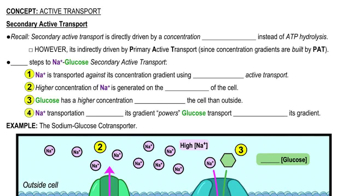Multiple Choice
Which of the following correctly describes a general property of all electrogenic pumps?
2203
views
 Verified step by step guidance
Verified step by step guidance Verified video answer for a similar problem:
Verified video answer for a similar problem:



 2:37m
2:37mMaster Active Transport with a bite sized video explanation from Bruce Bryan
Start learning